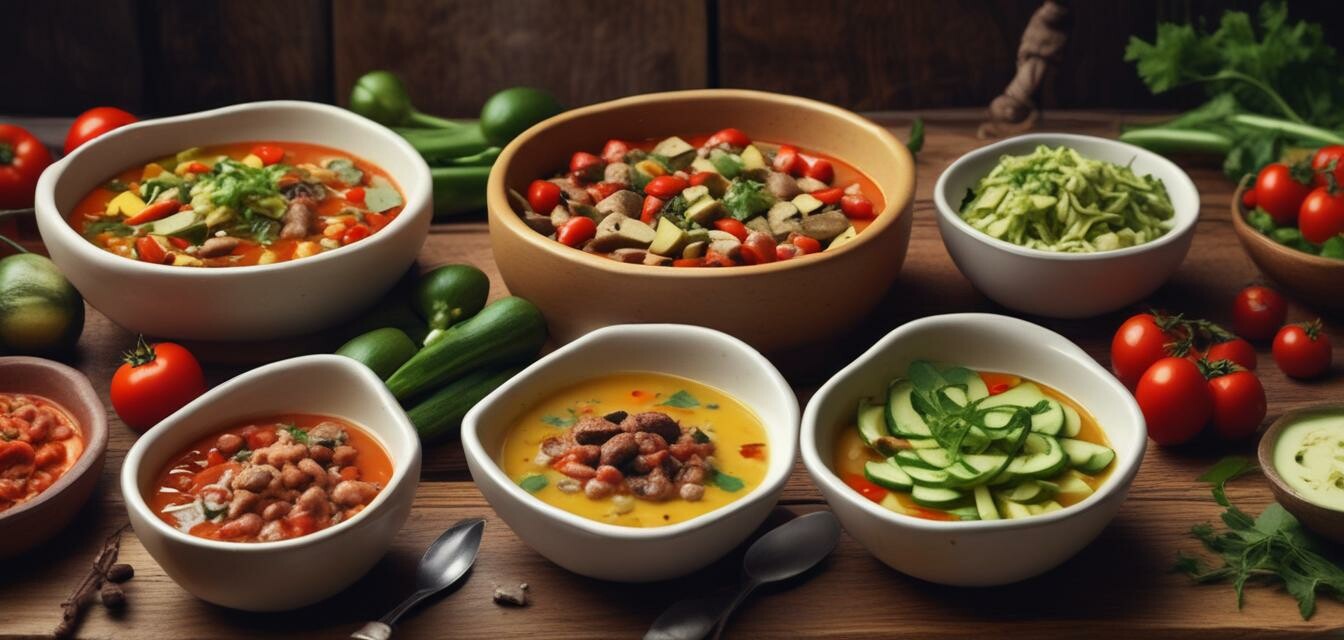
2025 Soup Trends: Embracing Global Flavors
Key Takeaways
- Explore trending global flavors enhancing traditional soup recipes in 2025.
- Discover how Zucchini Tomato Italian Sausage Soup adapts to modern tastes.
- Learn about exciting ingredients and herbs that will define soups in the coming year.
- Find inspiration and tips for creating delicious soups that stay healthy.
- Utilize seasonal produce to enhance the taste and nutritional value of your soups.
As we approach 2025, the culinary world is buzzing with new and exciting trends, especially in soups. It's no secret that soup is comfort food, but what makes it even better is the incorporation of global flavors. In this article, we will explore various soup trends that embrace these global ingredients, with a special focus on the classic Zucchini Tomato Italian Sausage Soup.
The rise of global flavors in soups
In recent years, there has been a noticeable shift toward using diverse and globally inspired ingredients in comfort dishes. Soups are no exception. As home cooks look to bring international tastes into their kitchens, several flavors are trending for 2025:
- Asian-inspired broths: Miso, lemongrass, and ginger are taking center stage.
- Mexican spices: Ingredients like chipotle, cilantro, and lime are adding a zesty kick.
- Middle Eastern influences: Harissa, za’atar, and chickpeas are becoming popular in soup recipes.
- Italian classics: Traditional herbs like basil and parmesan continue to shine.
Incorporating zucchini, tomato, and Italian sausage in 2025 soup trends
The classic Zucchini Tomato Italian Sausage Soup can adapt well to these emerging trends. Here are some ways to modernize this comforting bowl of goodness:
| Flavor Enhancement | Ingredient Addition | Method of Preparation |
|---|---|---|
| Asian flair | Ginger and soy sauce | Add during the simmering stage for deeper flavor |
| Mexican zest | Chipotle powder and black beans | Stir in with the sausage for a smoky flavor |
| Middle Eastern touch | Chickpeas and harissa | Mix in toward the end of cooking for warmth |
| Italian classic | Fresh herbs and parmesan | Top the soup before serving for a burst of flavor |
Key ingredients in the upcoming soup trend
While traditional ingredients remain beloved, adding new elements can make your soup stand out. Here are some trending ingredients for 2025:
- Fresh herbs: Basil, cilantro, and parsley for aromatic depth.
- Seasonal vegetables: Carrots, bell peppers, and sweet potatoes add sweetness.
- Protein options: beans, lentils, and lean meats enhance heartiness.
- Flavored oils: Infuse with chili oil or garlic oil for an extra kick.
Tips for delicious and healthy soups
Beginners Section
- Start with a flavorful base: Always create a rich broth using either homemade stock or quality store-bought alternatives.
- Use fresh ingredients: Fresh veggies and herbs will enhance the overall taste of the soup.
- Don’t rush the cooking: Give your ingredients time to meld together for full flavor.
- Taste as you go: Adjust seasonings according to your preferences throughout the cooking process.
The future of soup: What to expect in 2025
As we move closer to 2025, expect to see more soup recipes embracing bold flavors and global cuisines. The comfort of a warm bowl of soup doesn't have to be compromised for variety. Instead, we can anticipate a fusion of our favorite classic recipes with new zest that highlights the cultural significance of these ingredients.
Conclusion
In summary, soups in 2025 will continue to be versatile and complementary to global tastes. Classic recipes like Zucchini Tomato Italian Sausage Soup can embrace new flavors, making it not just comforting but also exciting. Whether you enjoy whipping up a simple family meal or experimenting with international flavors, keep an eye out for these trends in your culinary creations.
Pros
- Embraces a variety of flavors for more exciting meals.
- Utilizes seasonal and fresh ingredients, enhancing taste and nutrition.
- Satisfies comfort food cravings while being adaptable to modern tastes.
Cons
- Some unique ingredients may be difficult to source.
- Experimenting can lead to potential flavor mismatches for some cooks.
